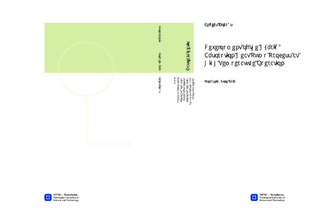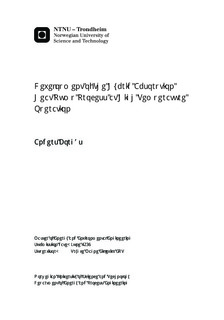| dc.description.abstract | Hybrid heat pumps with ammonia/water mixtures are identified as one of the most promising high temperature heat pump technologies. They are especially suited for processes with high temperature lifts, flexible regarding capacity control and external changes and enable the use of ammonia at higher temperatures than conventional vapour-compression heat pumps. A two-stage compression/absorption heat pump simulation model was developed in order to evaluate the thermodynamic process for high temperature operation. In simulation scenarios, waste heat was available at 50°C and the aim was to heat process water from 100°C to 150°C. Heat pump performance, temperature levels and pressure levels were some of the key results of the simulations. Secondary, it was developed a simulation model of a finned, annular tube cross-flow absorber in order to assess the dimensions of an absorber for heating air with an ammonia/water mixture. Both models were used in a simulation case where the compression/absorption heat pump was integrated in a spray drying process utilizing waste heat air at 35 °C.Simulations with the two-stage model showed that the scenarios with high water content in the vapour before the compressor, achieved the highest performances. Circulation ratios were higher, which resulted in a larger fraction of the mixture mass flow went through the compressor circuit, hence smaller compressor work. Although pressure ratios were higher, resulting absorber pressures were significantly lower. Some of the disadvantages with high water content were higher discharge temperatures, although discharge temperatures were high in all scenarios, and considerably lower vapour densities. In simulations were the discharge temperature was limited to 180 °C, the highest achieved COP was 1.81, while in simulations with no limitations to the discharge temperature, the highest COP was 2.53. Moreover, simulation scenarios without limitations to the discharge temperature resulted in lower absorber pressures, hence lower pressure ratios and higher performances. However, it resulted in discharge temperatures as high as 310 °C. Simulations with a desuperheater showed, provided that the minimum temperature difference between solution and heat sink does not occur at the absorber inlet, that a desuperheater provides no gain. Even when the minimum temperature difference occurs at the absorber inlet, there is only a small gain and it gets smaller with increasing circulation ratios.Dimensioning the absorber gave some unrealistic results in terms of an extreme ratio between absorber height and width/length. Even with the smallest obtained ratio, the height was 10 times the width, and the required surface area was significantly higher than for larger ratios. It is difficult to determine whether the results are due to errors in the simulation model or if it is difficult to obtain a noteworthy result with the simulation parameters. However, it is worth mentioning that the air mass flow rate was 15 times as high as the mixture mass flow rate. In the spray drying simulation case, the heat pump performance was 1.40 including the fan work. This performance was calculated with no limitation to the discharge temperature and with high water content in the vapour. With more realistic limitations, the performance would have been lower and the required. The required temperature lift in the case may have been somewhat high for the heat pump process. | nb_NO |

